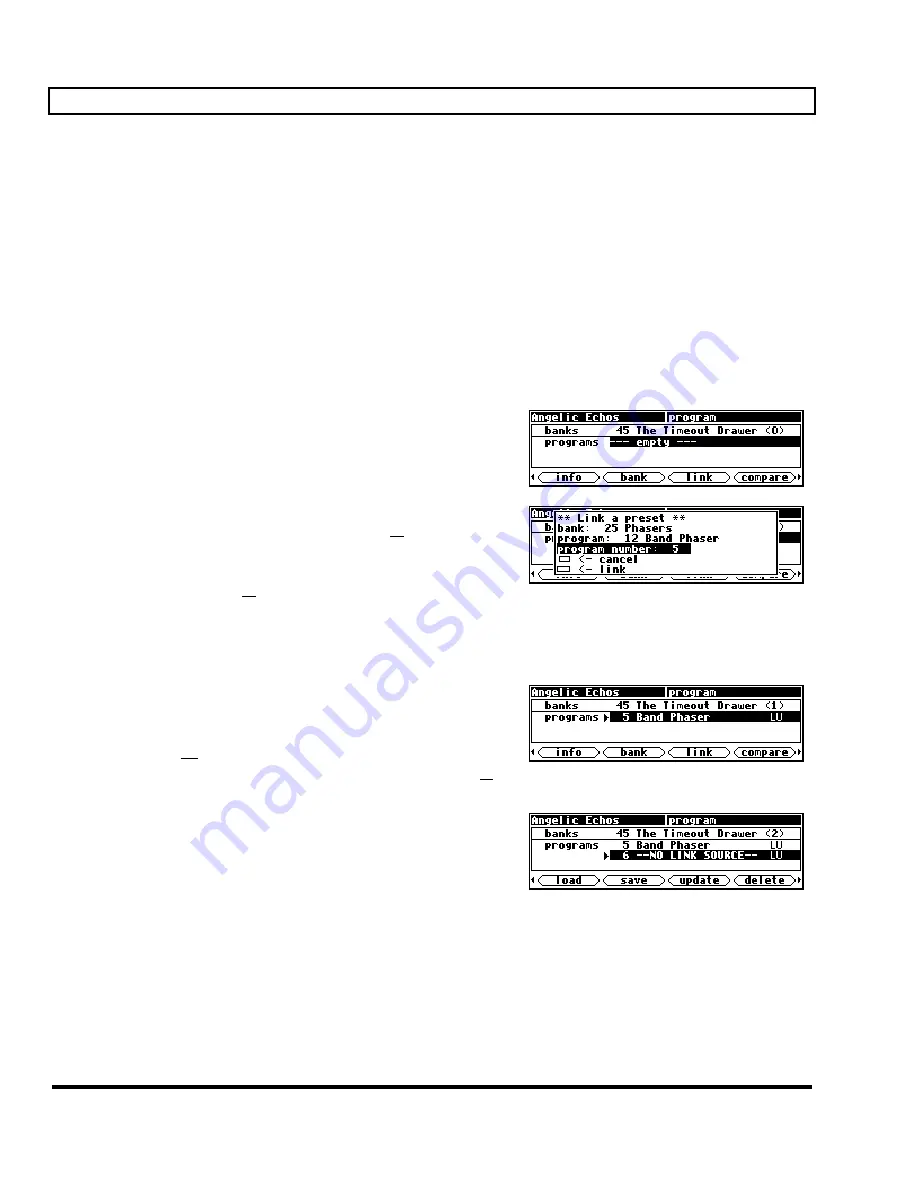
The
DSP7000
Family Operating Manual - Index
Page 58
The DSP7000 Family Operating Manual
Manual Release 1.1
2000 Eventide Inc.
“Linking” Programs
(Allowing Programs that are
Actually
Saved in Multiple Banks to
Appear
as Though They are Saved in the
Same
Bank.) Saving programs in an orderly fashion in a single bank can facilitate many tasks. One such task
would be the loading of programs on stage. Who wants to go scrolling hither, thither, and yon, searching
among hundreds of programs for the solo effect that has to happen
NOW
? In such a situation, you’d like to
save all of the programs you’ll use in the show in one bank in the order they’ll be used. But, if all of the pro-
grams you’ll use in the show are already saved elsewhere in the DSP7000, won’t
re-saving
them to the “Live
bank” waste a lot of precious storage space? Yes, Watson, it would, but we can circumvent that problem by
Linking
programs to the “Live bank.”
→
You can read about remotely loading programs in
Loading a Program Remotely
on page 55.
A
link
requires a paltry 38 bytes of storage space (recall that the smallest of programs require around 1000
bytes !). In reality, the link tells the DSP7000 where the program of interest is
actually
saved, but as far as
you’re concerned, the link
is
the program of interest.
To link a program, first go to the
PROGRAM
area. Select the bank
where you would like a link to show up. In our example, we’ll
place a link in the bank called “
The Timeout Drawer
.”
Press the
<link>
SOFT KEY
to reveal the "pop-up" menu shown
on the right. Find the program you want to link to with the
second and third lines, “
bank
” and “
program
.” Select the “slot”
you would like the link to appear in with “
program number
.” In
our example, we’re linking to the program “
Band Phaser
” that is
located in the “
Phasers
” bank. The link itself will be found in “slot” number 5 in the bank called “
The
Timeout Drawer
.” Place the cursor over “
link
” and press
SELECT
to confirm, or place the cursor over
“
cancel
” and press
SELECT
to abort.
Unlike ordinary program names, an “
L
” follows a link name to let
you know that it is, in fact, a link. You can delete a link just as you
would delete an ordinary program, and doing so will have no
effect on the “linked” program. If you load a program through a
link and later chose to
<update>
that program, the
actual linked program is updated
!
If a link is made to a program that is later deleted, the file name
will no longer be shown. Instead, the phrase
--NO LINK
SOURCE--
is displayed. Additionally, if a link is made to a
program on a Memory Card, the file name will not be shown
while the card is removed. Instead, the phrase
--NO LINK
SOURCE--
will again be displayed. Reinserting the Memory Card will restore the link. If you create a link in
an internal memory bank to a program on a card and then happen to insert a
different card
that has a program
in the same bank and slot number, the link on internal memory then will refer to the program on the differ-
ent card. Since this is probably not your intention, we recommend either taking care to put links only on the
card that contains the program to which they refer, or to use different bank numbers on different cards.






























